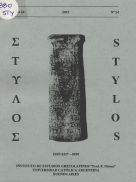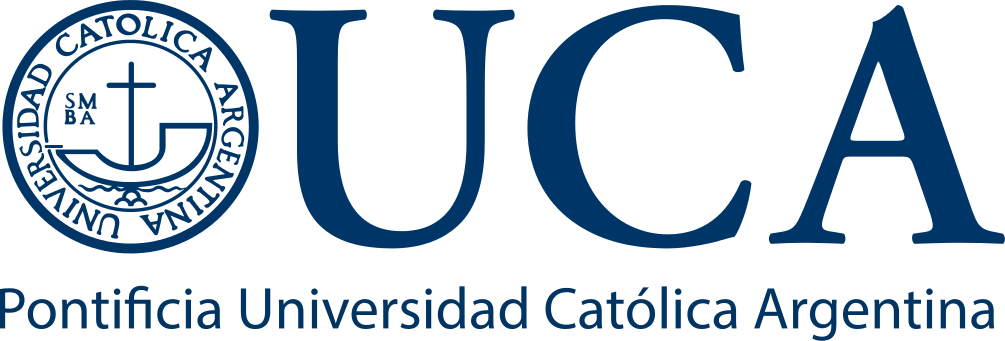Por favor, use este identificador para citar o enlazar este ítem:
https://repositorio.uca.edu.ar/handle/123456789/4280| Campo DC | Valor | Lengua/Idioma |
|---|---|---|
| dc.contributor.author | Rodríguez Cidre, Elsa | es |
| dc.date.accessioned | 2019-06-01T18:28:02Z | - |
| dc.date.available | 2019-06-01T18:28:02Z | - |
| dc.date.issued | 2015 | - |
| dc.identifier.citation | Rodríguez Cidre, Elsa. “Con redes, sin redes : cazar y ser cazado en Bacantes de Eurípides” [en línea]. Stylos, 24 (2015). Disponible en: https://repositorio.uca.edu.ar/handle/123456789/4280 | es |
| dc.identifier.issn | 0327-8859 | - |
| dc.identifier.uri | https://repositorio.uca.edu.ar/handle/123456789/4280 | - |
| dc.description.abstract | Resumen: Dentro de un trabajo en curso sobre procesos de animalización en Eurípides, el objetivo en esta ponencia es focalizar la mirada en una tragedia donde este recurso prácticamente estalla, Bacantes. Hemos analizado la animalización respecto de Ágave y el colectivo de mujeres en tanto referencia a animales concretos, así como también a partir de la imagen del sacrificio en las animalizaciones de Dioniso y Penteo. Eurípides carga las tintas en los tres personajes principales: Penteo encarna por antonomasia el tópos del cazador cazado; su madre y las ménades representan a las cazadoras fuera de sí a quienes Baco puede hacerles cazar lo que desee; el dios mismo recurre a la imaginería de la caza para aparecer primero como presa y luego como el gran victimario. En UCA 2011 hemos analizado las referencias figuradas a la caza y la tensión que se desarrolla en ellas cuando focalizamos términos concretos y abstractos. El objetivo de esta ponencia es analizar las demás referencias a la caza en una obra donde las múltiples lecturas posibles revelan las ambigüedades de base que estructuran la complejidad del texto. | es |
| dc.description.abstract | Abstract: In the context of a current work on processes of animalization in Euripides, this paper aims to analyze it in a tragedy where this resource practically explodes, Bacchae. We have studied the animalization with respect to Agave and the women's group as reference to concrete animals as well as also from the image of the sacrifice in Dionysus’ and Pentheus’ animalizations. Euripides emphasizes around the three main characters: Pentheus personifies par excellence the hunted hunter topos; his mother and the maenads represent the huntresses out of their minds to whom Dionysus can make hunt whatever he desires; the god himself resorts to the imaginary of hunting to appear first as prey and then as big killer. In UCA 2011 we have analyzed the references represented by hunting and the tensions within them that we can determine when we concentrate on concrete and abstract terms. In this paper we analyze other references to hunting in a play where multiple possible interpretations reveal the base ambiguities that structure the complexity of text. | es |
| dc.format | application/pdf | es |
| dc.language.iso | spa | es |
| dc.publisher | Universidad Católica Argentina. Facultad de Filosofía y Letras. Instituto de estudios grecolatinos "Prof. F. Nóvoa" | es |
| dc.rights | Acceso Abierto | es |
| dc.rights.uri | https://creativecommons.org/licenses/by-nc-sa/4.0/ | es |
| dc.source | Stylos, 24, 2015 | es |
| dc.subject | Eurípides, 480-406 a.C. | es |
| dc.subject | LITERATURA GRIEGA | es |
| dc.subject | TRAGEDIA | es |
| dc.subject | TEATRO GRIEGO | es |
| dc.subject | ANALISIS LITERARIA | es |
| dc.title | Con redes, sin redes : cazar y ser cazado en Bacantes de Eurípides | es |
| dc.type | Artículo | es |
| uca.path | Stylos|2015 nº 24 | es |
| uca.disciplina | LITERATURA | es |
| uca.filename | /home/data-uca-generic/folder_generic/stylos/stylos24/con-redes-sin-redes-bacantes-euripides/metadata.xml | es |
| uca.issnrd | 1 | es |
| uca.affiliation | Fil: Rodríguez Cidre, Elsa. Universidad de Buenos Aires; Argentina | es |
| uca.affiliation | Fil: Rodríguez Cidre, Elsa. Consejo Nacional de Investigaciones Científicas y Técnicas; Argentina | es |
| uca.orden | 14 | es |
| uca.version | publishedVersion | es |
| item.grantfulltext | open | - |
| item.fulltext | With Fulltext | - |
| item.languageiso639-1 | es | - |
| Aparece en las colecciones: | STY - 2015 nro. 24 | |
Ficheros en este ítem:
| Fichero | Descripción | Tamaño | Formato | |
|---|---|---|---|---|
| con-redes-sin-redes-bacantes-euripides.pdf | 294,96 kB | Adobe PDF |  Visualizar/Abrir |
Visualizaciones de página(s)
163
comprobado en 30-abr-2024
Descarga(s)
207
comprobado en 30-abr-2024
Google ScholarTM
Ver en Google Scholar
Este ítem está sujeto a una Licencia Creative Commons

